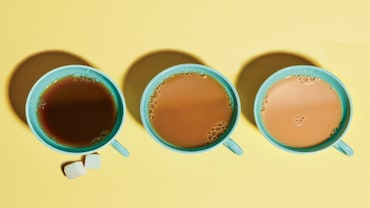- HOME
- /
- Better Living
- /
- Home
- /
Get A Healthy Home
Tips to keep your home hygienic and healthy
 Illustration by Serge Bloch
Illustration by Serge Bloch
Most of us have spent more time at home recently than we ever imagined possible. Maybe you took the opportunity to clean, or maybe you plan to do it ... tomorrow. These tips can help make your domicile better for your body and your mind.
1. Think about keeping your home clean the minute you walk in—literally. Take off your shoes at your door. A University of Arizona study found that the average shoe harbours nearly 4,21,000 different bacteria, including Escherichia coli and Streptococcal bacteria.
Pesticides, tar, lead, mould and cleaning chemicals can also get tracked into your home via your shoes. Leave a pair of slippers by the front door.
2. Natural cleaners are great, and they can also be surprising. Can’t find bleach? Try vodka! High-alcohol vodka (at least 120 proof) makes an excellent disinfectant. So if you have some vodka you’re not planning to drink, mix it with an equal amount of water, put it in a spray bottle and use it to freshen your sheets and smelly gym clothes.
3. Even if you think you’ve disinfected everything, you might have overlooked some germ magnets. One notorious offender: toothbrush holders, which need rinsing with soap and water daily. Another culprit: kitchen sponges, which are so unsanitary, they’ve been banned from restaurant kitchens.
4. Portable ultraviolet (UV) lights are a highly touted germ-killer. Hospitals use powerful UVC light to disinfect rooms, as it can kill viruses (possibly even the new coronavirus). But beware: Not all home disinfecting systems use UVC, and some UV lights can quickly burn your skin.
5. If the walls in your home feel as if they’re closing in, maybe it’s time to freshen them up with a new coat of paint. Studies have shown that colour can influence your mood. Researchers at the University of British Columbia found that blue boosts creativity, while red increases attention to detail.
6. Another mood booster: Work near a window. In a small study, volunteers worked from noon to 8 p.m. in a room lit primarily by daylight or one lit primarily by artificial light. By the end of the second day, those who had worked in the sunlit room were less sleepy and performed better on cognitive performance tests.
7. Don’t forget to clean the air in your home too. The gold standard is a high-efficiency particulate air (HEPA) filter, which are efficient though rather pricey. The US Department of Energy requires that they remove 99.97 per cent of pollutants and particles in the air. Portable HEPA filters can clean a single room or the entire house.
8. There are cheaper ways to clean the air—start by cracking a window. Indoor air can have two to five times more pollutants than outdoor air. Cleaning products can produce irritating, even hazardous, chemicals. But if you suffer from seasonal allergies, be mindful of the trade-offs.
9. Himalayan salt lamps are pretty, but there is no proof that they purify the air by emitting negative ions, as some of these products claim. That said, you can get mood-boosting negative ions via fresh air at the beach, in the mountains or after a rainstorm.
10. Speaking of salt: It’s a surprisingly good cleaning agent. Sprinkle some table salt and baking soda on your grimy stove top and wipe with a wet cloth. Use a teaspoonful with some water or a little oil to clean a cast-iron pan. For extra help with copper, slather on a layer of ketchup before the salt, then scrub and rinse.
11. Many viruses don’t spread as well in moist air as they do in the cold, dry months. One easy solution for the winter: using a humidifier. The Centers of Disease Control and Prevention advises against cool-mist humidifiers, which can harbour bacteria if they aren’t cleaned regularly.
Old-fashioned steam humidifiers are best. But too much humidity can worsen respiratory problems and encourage the growth of dust mites, mildew as well as mould. The ideal humidity level, especially for sleeping, is 40 to 60 per cent.
12. Even ‘good’ municipal water contains small amounts of lead and chlorine. Consider a filter, one that attaches to your kitchen faucet or is inserted in a pitcher, rather than resorting to bottled water. In a test of 10 bestselling bottled waters, Environmental Working Group researchers found mixtures of eight contaminants, including bacteria, fertilizers and industrial chemicals.
13. Here’s a cleaning tip from the experts at Family Handyman: Change the filters in your air-conditioning unit or furnace to get a jump on allergy season.






